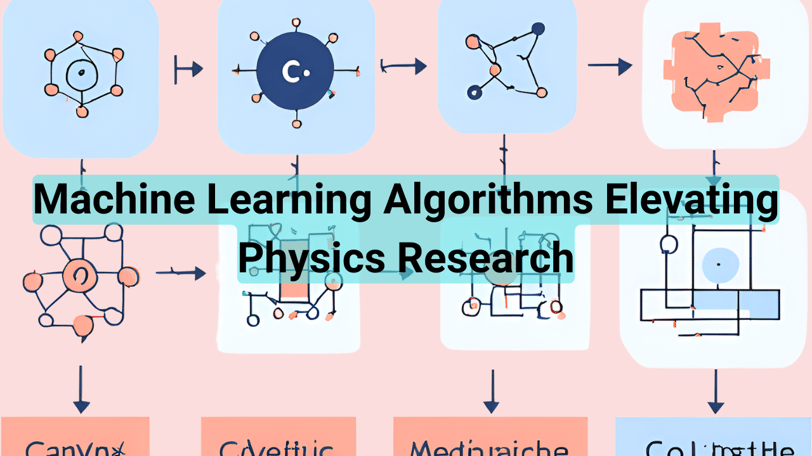Machine Learning Algorithms Elevating Physics Research


ML is now a critical tool for doing modern physics, providing new, innovative solutions to problems previously thought to be intractable. The interaction of ML and physics has also been able to tailor algorithms that focus on particular issues in physics. Here, we discuss some of the important ML algorithms impacting diverse branches of physics.
1. Supervised Learning Algorithms: In particle physics, these algorithms are used everywhere for identifying known particles and designing targeted searches for new physics theories. They require labelled datasets from which they learn the relationship between the input features and output labels of elements as part of their mapping, making them perfect for classification tasks that result in well-defined outcomes.
2. Unsupervised Learning Algorithms: These are used in searches that rely less on having a specific signal model, in which a physicist discovers the patterns and correlations in the data using no pre-labelled examples. They find suitable application during the exploration of data and when dealing with unstructured or complex data.
3. Neural Networks (NN): Deep neural networks, in particular, are the heart of ML applications in physics. They are quite good at function approximation and pattern recognition, both of which come in handy in modelling complex systems like fluid dynamics and many-body quantum systems.
4. Generative Modelling: Generative modelling algorithms are used to create new samples in the space that are similar to the training set. The direct application of generative models in physics is by simulating physical systems, creating synthetic datasets for training other machine learning models, or helping interpret the underlying distribution of data.
5. Reinforcement Learning (RL): RL algorithms learn to make decisions by interacting with an environment. In physics, RL is also known to be promising in controlling quantum experiments and improving optimisation processes. For example, RL can be used to find an optimal strategy for cooling atomic gases or to manipulate quantum bits in quantum computers.
6. Physics-Informed Neural Networks (PINNs): PINNs are neural networks that incorporate physical laws into the training process, which helps in solving differential equations and optimising simulations. They are particularly useful in fluid mechanics, where they can augment or even replace high-fidelity numerical simulations of complex turbulent flows.
7. Active Learning: This paradigm is suited for scenarios where data labelling is expensive or time-consuming. Active learning algorithms interactively query the user or some other information source to obtain the desired outputs at new data points, thereby reducing the need for large labelled datasets.
The integration of these ML algorithms into physics research has opened new avenues for discovery and innovation. Leverage the strengths of ML to analyse large datasets more efficiently, uncover hidden patterns, and accelerate the pace of scientific breakthroughs. As the field continues to evolve, we can expect the development of even more sophisticated and precise algorithms that will further enhance our understanding of the physical universe.
